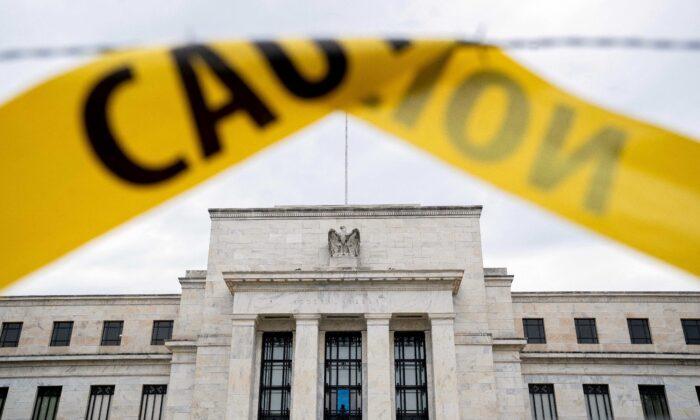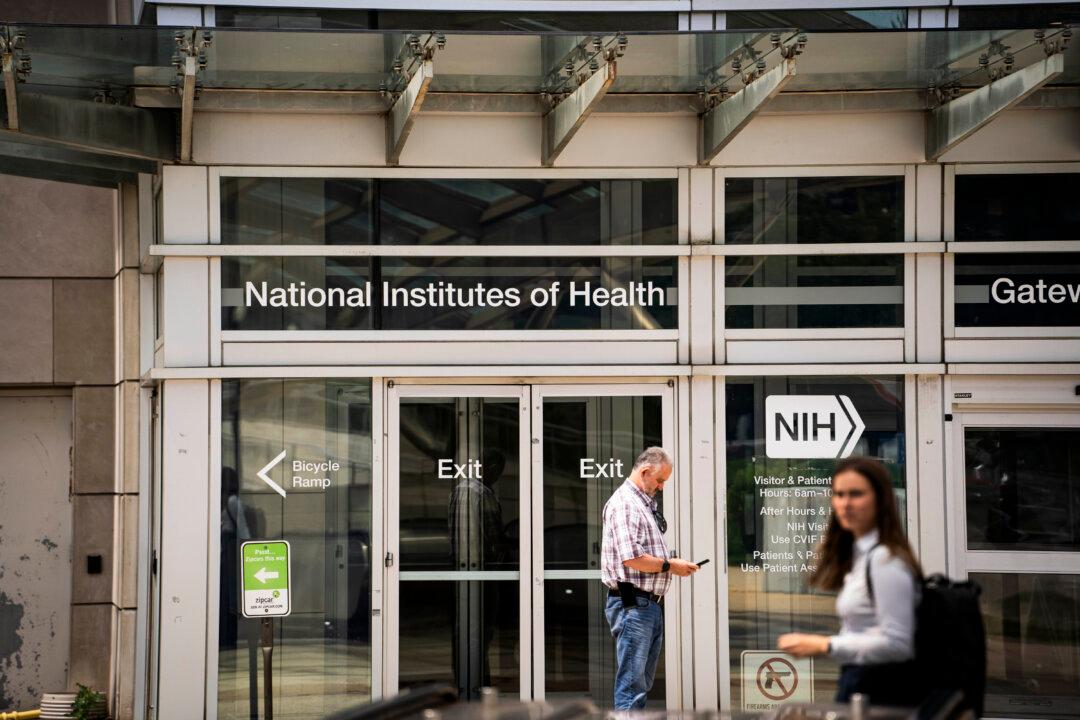Stresses continue to linger in the U.S. financial sector following a series of bank failures last month as banks have ramped up their borrowing from the Federal Reserve’s emergency lending facilities for the first time since the immediate aftermath of the spectacular collapse of Silicon Valley Bank (SVB) on March 10.
Bank Backstops
Following the failure of SVB and several other banks soon after, the Fed created a new emergency lending mechanism called the Bank Term Funding Program (BTFP).The program offers banks and other deposit-taking institutions loans under preferential conditions, allowing them to put up assets like Treasurys as collateral that the Fed accepts at par value rather than at market prices.
The aim of the new emergency mechanism was to provide banks with ample liquidity to meet depositor withdrawal demand, which spiked in the wake of the SVB collapse as depositors withdrew their savings from banks amid heightened uncertainty.
Demand for both programs, which jointly make up the Fed’s emergency backstop for banks, soared immediately following the SVB collapse and then declined for four straight weeks, suggesting that the situation in the banking sector was stabilizing, particularly in terms of deposit outflows.
The reversal of this trend points to ongoing stresses in the financial sector.
“The U.S. banking sector continues to have fundamental weaknesses that have been contained due to liquidity injections and short-term loans,” Daniel Lacalle, chief economist at hedge fund Tressis, told The Epoch Times in an emailed statement.
“But the core problem remains: the profitable asset base has been destroyed by years of negative real rates,” Lacalle added.
Current Crisis ‘Not Yet Over’
Several prominent market players, including JPMorgan CEO Jamie Dimon and renowned investor Warren Buffet, recently warned that the final chapter to the banking turmoil has yet to be written.Dimon said he sees signs of strength in the U.S. economy in the near term, but looking ahead, there’s trouble brewing.
“The current crisis has exposed some weaknesses in the system,” Dimon wrote, adding that America faces a range of “unique and complicated issues.”
He warned of persistent inflation, huge geopolitical strains, the unpredictable trajectory of the Russia–Ukraine war, as well as large quantitative tightening and “other unknowns” that reduce liquidity and trigger higher long-term interest rates.
“Fiscal stimulus is still surging through the system,” Dimon said, insisting that it’s been inflationary and that multiplier effects of the stimulus mean that it still putting upward pressure on prices.
As the Fed grapples with high inflation, it has reversed more than a decade of quantitative easing and has been reducing its balance sheet in what’s known as quantitative tightening.
So far, the Fed has reduced its holdings of securities by around $550 billion and has committed to slashing those holdings by nearly $100 billion per month.
The ongoing process of quantitative tightening is something “whose full effect may not be known immediately,” said Dimon, who believes the United States is shifting from a savings glut to a scarcity of capital, which eventually means higher interest rates and borrowing costs.
“Essentially, we may be moving, as I read somewhere, from a virtuous cycle to a vicious cycle,” he wrote in the letter.





